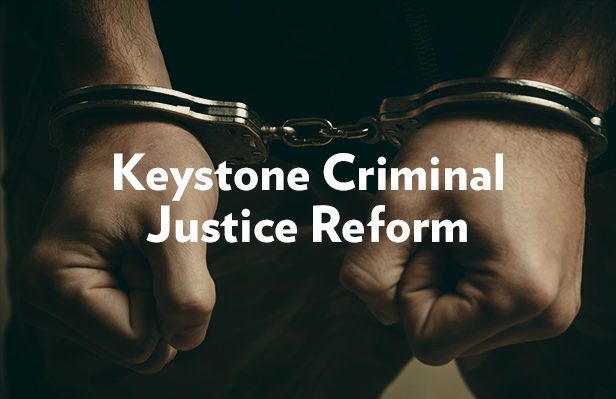Media

Does Justice Reinvestment Work?
One of the foremost, data-driven efforts in the nation to make criminal justice truly fair and effective is under consideration in the Pennsylvania House after a unanimous vote in the state Senate.
As my colleague Nate Benefield and I recently testified in Judiciary Committee, the Justice Reinvestment Initiative II (JRI II) will reform probation and parole practices, enhance sentencing, and boost crime victim rights. The resulting reduction in recidivism and incarceration will help generate savings that can be reinvested into county probation and parole departments and crime victim supports.
JRI II is built upon a proven reinvestment model.
Pennsylvania passed the first phase of Justice Reinvestment in 2012, producing an estimated $96 million in savings and contributing to a 3.7 percent decline in the prison population and 18 percent crime rate reduction. Now a majority of states are considering and adopting similar reinvestment reforms.
Here’s the specifics on JRI I’s savings and reinvestment.
JRI I anticipated savings.
When JRI I legislation passed, the Department of Corrections (DOC) and Office of the Budget estimated savings of $141.8 million over five years.
JRI I reinvestment shortchanged by policy decisions.
Savings, generated through a prison population reduction, diversion of mid-minimum and short-minimum offenders, and a more efficient parole system, were supposed to be reinvested as a percentage each year.
Transfers to the reinvestment fund totaled just $13.5 million over five years, short of the intended reinvestment percentages, due to administrative and legislative decisions.
- In 2013-14: $0
- An ambitious timeline in which to realize savings, and slow implementation of the changes, led to a lack of funds to reinvest.
- In 2014-15: $991,000
- In 2015-16: $2.95 million
- In 2016-17: $9.61 million
- In 2017-18: $0
- The 2017 Fiscal Code cut all JRI funding in 2017-18 to balance the budget, meaning poor policy decisions—not JRI shortcomings—altered direct reinvestments.
Despite this, JRI I reinvestments have compounded over time.
Since JRI I passed, various trends indicate JRI savings are growing, but not as quickly as predicted.
- The Council of State Governments analysis estimated $96 million in cost aversions in 2018.
- According to DOC, “the prison population is 25.8% lower than it would have been without JRI. Our budget is 23.3% lower ($543 M) than it would have been without JRI.” (This is based upon 2010 anticipated population growth.)
- The inmate population decline by nearly 4,000 inmates and one state prison closed, which can at least partially be attributed to JRI I.
Beyond official savings of certain countable measures, JRI influences behavior and policies, such as improved technologies, training, and drug treatment, that in countless ways positively impact thousands of individuals. History shows reinvestment can be successful—but the scope of success largely depends on how committed elected officials are to prioritizing criminal justice reforms and reinvestment.